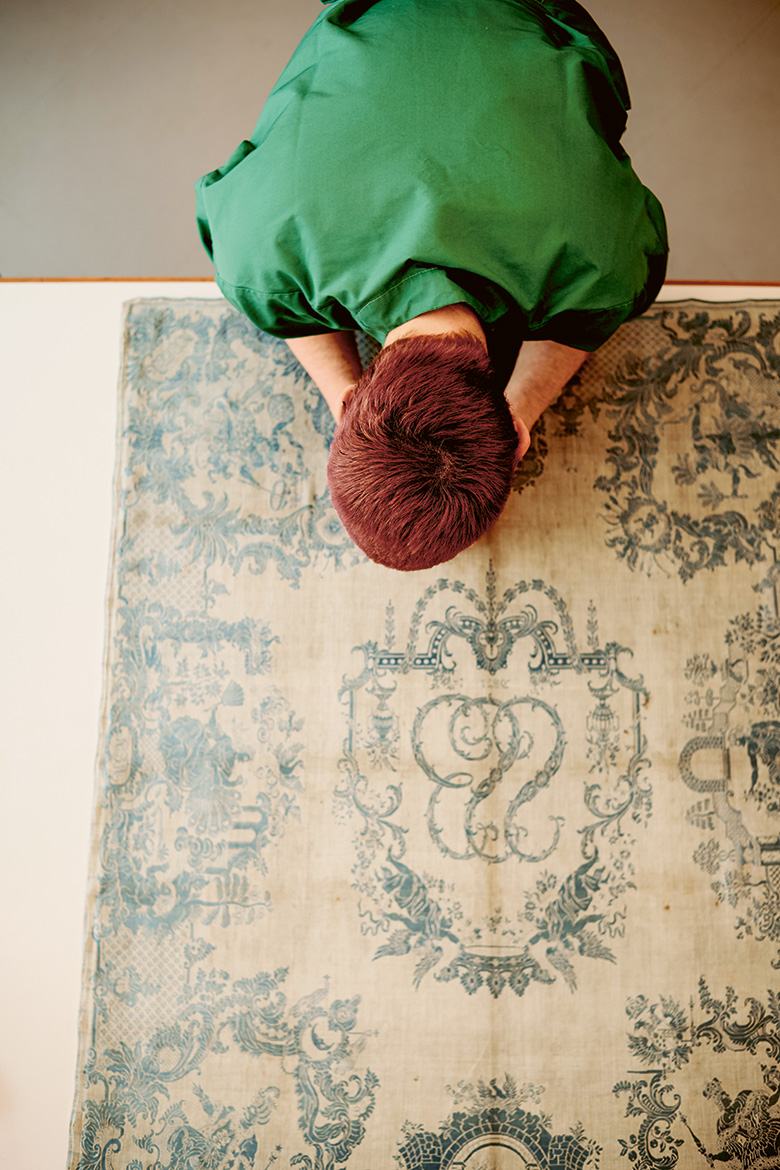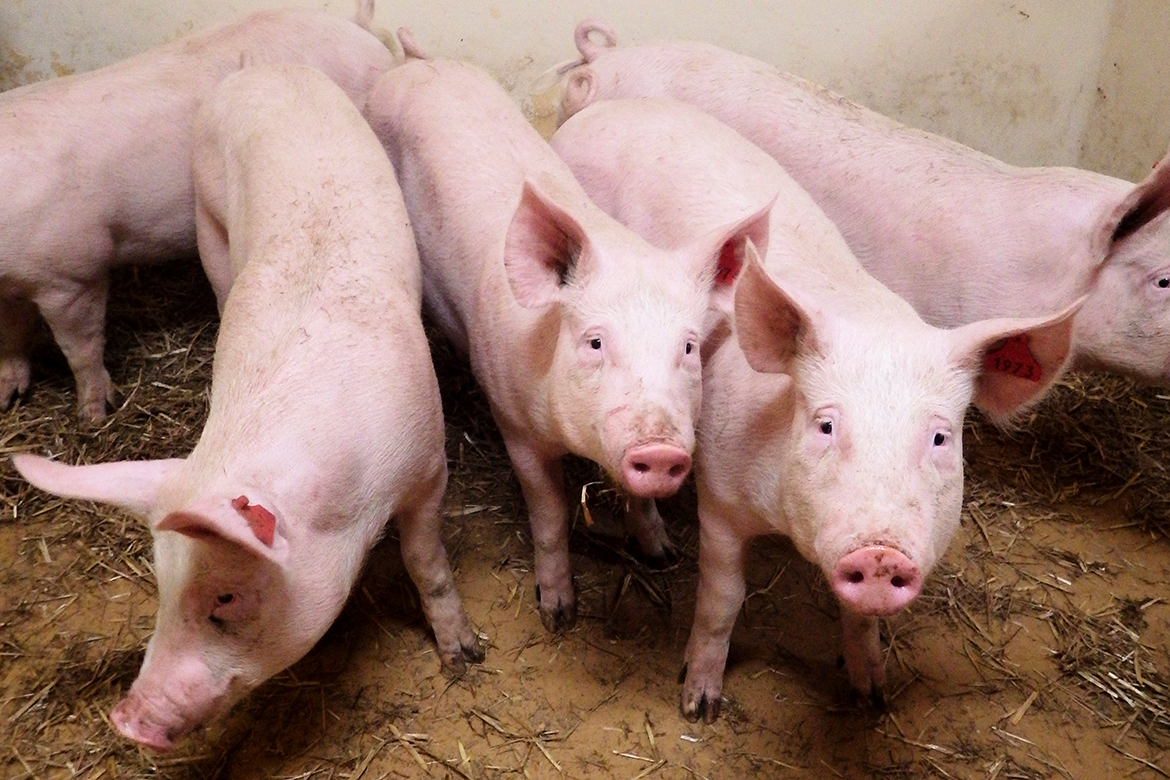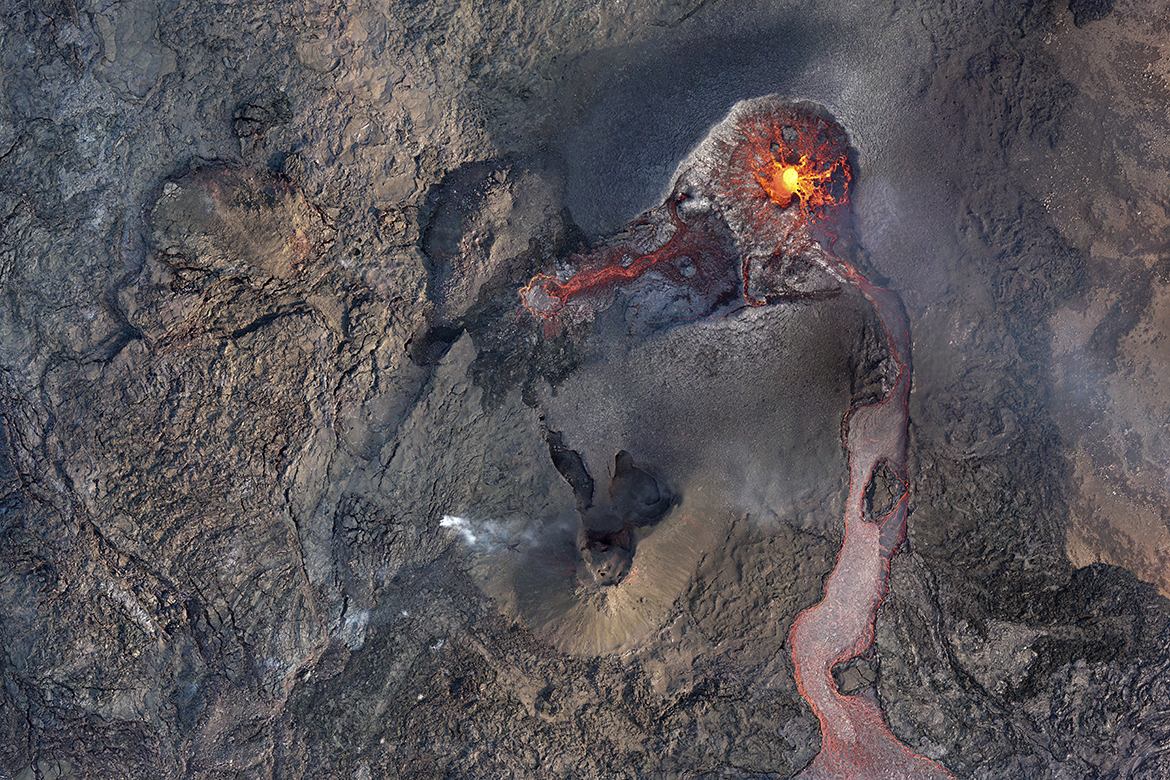REPORT
Clothes maketh the woman
From the decaying burial clothes of a mummy in Basel to spotless tablecloths from the Netherlands: at the textile conservation workshop of the Abegg Foundation, the staff are researching into ancient textiles from all over the world. We visit them and observe them at their work – utilising the most modern detective methods on ancient craftsmanship.
There’s a rustling of tissue paper, and heads are bent over a little clump of stockings – though it looks more like a pile of dust than anything material. And yet it’s of inestimable value. At the Abegg Foundation in Riggisberg in the canton of Bern, historical textiles from across the globe are investigated and preserved. Besides experienced restorers, we also find students and young experts from all manner of countries in the Foundation’s textile conservation workshop. Natalia Boncioli comes from Italy, for example. She completed her Master in the summer of 2020 and now stands here, amidst the fragments of her research. The stocking fibres are just one piece in a puzzle that she’s been trying to complete for months. She moves carefully between the tables. These are covered with chequered paper and polyester film, and on them lie tweezers and little glass boxes with incredibly fine substances in them. There are also blown-up microscope photographs and what look like maps of continents of an unknown world. And there are clumps of textiles, chocolate-brown in colour and stuck together, some of them in an advanced state of decay.
The mummy from Basel
Way back when, these threads and clumps of textile once clothed the body of a certain Anna Catharina Bischoff, who died in August 1787 at the age of 68. She caused a sensation when her mummified body was found in the Barfüsser Church in Basel in 1975. She presumably suffered from syphilis and had been treated with mercury vapours, which in turn were probably what caused the mummification process. “This is where the crux of all our work lies”, says Regula Schorta, the director of the Abegg Foundation. “What’s exciting is not the fact that women in Basel wore stockings at that time. We knew that. But they can give us direct insights into a very specific life. She was the daughter of a clergyman and died a clergyman’s widow in modest circumstances – but someone had put stockings on her and not simply wrapped her in a shroud”. Here in Switzerland, it is rare to be able to be so specific, because in general, neither clothes nor bodies survive.
Schorta monitors every project in the workshop, always ready to “parachute in”, as she says, and engage with anyone in discussions about the right solutions for problems of textile conservation. “Textiles are part of our culture that we would like to be able to show later generations. If we can do that with the original materials, it’s all the better”. In recent years, over 40 researchers from all over Europe have done research into the Barfüsser mummy. That is how her identity was finally established. An analysis of her grave clothes adds more information to the overall picture of her time, allowing it to come more clearly into focus.
Fragment by fragment
Boncioli taps on the photo of a cardboard box. “Look at its contents”. There is a yellowed newspaper used as padding, then dust, pebbles and glued fabric. “I had three such boxes that belong to the Natural History Museum in Basel. The textile finds from 1975 were kept in them. Oh, and they had paper notes on them that said ‘left’, ‘right’, and ‘underneath the buttock area’”. Her analysis helped her to determine that by no means all the fragments from the third box could have come from under the behind of the Barfüsser mummy. She explains that those who discovered her had been so eager to get to her actual body that they more or less tore off her clothes. There was no professional documentation of the discovery. “What fragments of textile are from her skirt or from her top? I was only able to fathom this out thanks to a privately made film, and by visiting the mummy itself”.
The aim of Boncioli’s research is to find out just what Anna Bischoff was wearing when she was buried. She probably wore a long skirt and a short jacket with a blouse underneath it. And her pair of woollen stockings. We can probably also assume that she wore a bonnet and a ‘fichu’ – a cloth that would have covered her neck and cleavage. The remains of a burial shroud were also found. Boncioli has managed to determine many details – such as the fact that the skirt was most probably made of an outer fabric and an inner lining – and that she had also worn it while she lived (because it had been mended in at least one place).
With pointed fingers, Boncioli pulls at the waistband of a skirt on a clothes stand. It’s only now that we notice this floor-length robe that looks almost pale alongside the original fragments. “The outer fabric has a horizontal dividing seam just beneath the waistline. It was only when I made this copy of her skirt that I understood why: it gives the impression of being more voluminous”. This reconstruction is the highpoint of Boncioli’s scholarly research – it’s the finished puzzle.
Modern technology for old fabrics
Figuring out how the individual finds can be combined to provide precise knowledge is a complex process. Because archaeological materials are full of microbes, the first thing they have to do is to undertake microbiological and toxicological analyses to determine the health risk that they might pose. The textile conservators also use face masks – and they were doing so long before the coronavirus. In order to recognise which fragments of the mummy’s clothing belong together, they first had to be cleaned in a careful process of vacuuming. At the same time, analyses were carried out of the weave, dye and fibres. To determine the materials used, Boncioli subjected the fibres to different solvents and then observed their behaviour under the optical microscope. However, she had to take the fragile, glued remains of the stockings to a laboratory at the Bern University of the Arts, because there she was able to use a scanning electron microscope with a very high focus to make more detailed images. Boncioli also catalogued everything. The ‘maps’ that lie on the tables aren’t actually maps at all, but are drawings of the exact outlines of the textile fragments.
The body of the mummy also provided important information to help understand her clothing. Computer tomography helped the researchers to find out the woman’s exact size, and Boncioli also discovered the imprint of stockings below the hollow of her knee. That was how she was able to prove that Anna Bischoff had worn stockings.
Months of vacuuming
A few tables away, we can see the exact opposite of the brown clothes of the Basel mummy – it’s as smooth as glass and as white as snow. It’s linen damask from the 17th century, such as was traditionally in wide use for tablecloths, especially in the Netherlands. Back then they were highly prized and handed down through the generations, but they were also divided up and passed on. “Textiles were among the most precious things you could own. They were more expensive than paintings”, says Regula Schorta.
At the workspace opposite the wooden, ceiling-high unit for storing materials, there is a dull, pumping sound in a constant rhythm. Noa Quinteiro Carrera, a student from Spain, is sitting deep in concentration, bent over a little box. It was discovered in an attic in the German bishopric of Limburg and in the 15th century was used to store a ‘corporal’ – a piece of white linen that was utilised during the celebration of mass. Carrera has already vacuumed every individual fibre of the embroidered picture of the Virgin Mary on the cloth, and checked everything with a microscope. “She was dreadfully dirty”, she says, and laughs. “But a little wooden box, embroidered with silk and metal threads is something you simply can’t wash”. She has been vacuuming the lid of it alone for a whole month – day after day. “It’s a kind of meditation, but always in relation to the object and my work on it. I’m getting to know the embroidery and its state of preservation. I see its details and can interpret them”.
All this takes time. “That’s a luxury we have here. We want to teach the students that it can take you far. This work needs stamina and tenacity, a feeling for the textiles, and the kind of knowledge about decay processes that you get from the natural sciences. You also need to know your art history in order to be able to categorise the object properly – to determine its so-called object biography”, says Schorta.
At the end, she also offers us a glimpse of how they store the historical textiles that are not being exhibited at the museum of textiles and applied art in the same building, nor in the Abegg family’s former home – the Villa Abegg – that is now also a museum. In a side room off the workshop, she opens up oversized compartments and drawers to show us magnificent robes, free of creases and protected from dust; then she shows us fragments of embroidery kept in tiny drawers that have removable bottoms so that the objects themselves need never be touched. This is because textiles become ever thinner before turning to dust. Only careful detective work can help combat the ravages of time and turn a razor-thin piece of stocking into a hoard of knowledge.














